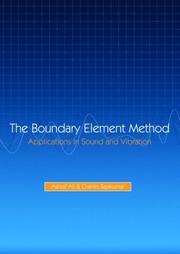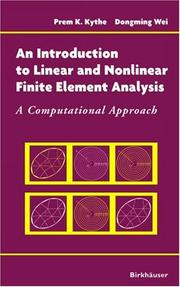| Listing 1 - 6 of 6 |
Sort by
|
Periodical
Year: 2004 Publisher: New Brunswick, N.J. : Center for Electronic Texts in the Humanities,
Abstract | Keywords | Export | Availability | Bookmark
 Loading...
Loading...Choose an application
- Reference Manager
- EndNote
- RefWorks (Direct export to RefWorks)
Periodical
Year: 2004 Publisher: New Brunswick, N.J. : Center for Electronic Texts in the Humanities,
Abstract | Keywords | Export | Availability | Bookmark
 Loading...
Loading...Choose an application
- Reference Manager
- EndNote
- RefWorks (Direct export to RefWorks)
Periodical
Year: 2004 Publisher: New Brunswick, N.J. : Center for Electronic Texts in the Humanities,
Abstract | Keywords | Export | Availability | Bookmark
 Loading...
Loading...Choose an application
- Reference Manager
- EndNote
- RefWorks (Direct export to RefWorks)

Abstract | Keywords | Export | Availability | Bookmark
 Loading...
Loading...Choose an application
- Reference Manager
- EndNote
- RefWorks (Direct export to RefWorks)
The boundary element method (BEM) has established itself as a powerful numerical analysis tool. The distinct feature of BEM is that it reduces the problem dimensionality by one. This implies that two- and three-dimensional problems can be solved in one and two dimensions, respectively. For this reason, BEM offers particular advantages in comparison with domain methods, such as the finite element method. BEM is a global technique, which is based on the superposition of the free-field Green's functions and as such, does not easily lend itself to the development of algebraic eigenvalue formulation. In the past two decades, research activities in this area have increased rapidly, which has resulted in a wealth of literature on BE eigenanalysis. In The Boundary Element Method, a chronological review of all BE eigenvalue methods that have been proposed to date is provided. Subjects treated range from an outline of the non-algebraic BE eigenvalue analysis technique, such as the Determinant Search Method, to in-depth consideration of more elegant BE algebraic eigenvalue formulations, such as the Dual and Multiple Reciprocity, Particular Integral, Fictitious Function and Series Expansion Methods. The fundamentals of BEM are also provided in the book. In order to illustrate application of the methods presented, numerous examples are included. In addition, advantages and disadvantages of each eigenformulation are discussed and recommendations are given to increase the robustness and reliability of BE eigenvalue analyses through future research in this evolving area. This book is intended for researchers and professionals in the field of engineering and BE code development. It provides comprehensive information on BEM and numerous ideas for future research. Moreover it would serve as a valuable textbook for the education of graduate engineering students.
Boundary element methods. --- Acoustical engineering --- Mathematical models.
Book
ISBN: 0306483874 Year: 2004 Publisher: Dordrecht, The Netherlands ; Boston : Kluwer Academic Publishers,
Abstract | Keywords | Export | Availability | Bookmark
 Loading...
Loading...Choose an application
- Reference Manager
- EndNote
- RefWorks (Direct export to RefWorks)
W S HALL School of Computing and Mathematics, University of Teesside, Middlesbrough, TS1 3BA UK G OLIVETO Division of Structural Engineering, Department of Civil and Environmental Engineering, University of Catania, Viale A. Doria 6, 95125 Catania, Italy Soil-Structure Interaction is a challenging multidisciplinary subject which covers several areas of Civil Engineering. Virtually every construction is connected to the ground and the interaction between the artefact and the foundation medium may affect considerably both the superstructure and the foundation soil. The Soil-Structure Interaction problem has become an important feature of Structural Engineering with the advent of massive constructions on soft soils such as nuclear power plants, concrete and earth dams. Buildings, bridges, tunnels and underground structures may also require particular attention to be given to the problems of Soil-Structure Interaction. Dynamic Soil-Structure Interaction is prominent in Earthquake Engineering problems. The complexity of the problem, due also to its multidisciplinary nature and to the fact of having to consider bounded and unbounded media of different mechanical characteristics, requires a numerical treatment for any application of engineering significance. The Boundary Element Method appears to be well suited to solve problems of Soil- Structure Interaction through its ability to discretize only the boundaries of complex and often unbounded geometries. Non-linear problems which often arise in Soil-Structure Interaction may also be treated advantageously by a judicious mix of Boundary and Finite Element discretizations.
Soil-structure interaction. --- Mechanics. --- Boundary element methods

ISBN: 0817643087 3764343087 1461264669 0817681604 Year: 2004 Publisher: Boston, MA : Birkhäuser,
Abstract | Keywords | Export | Availability | Bookmark
 Loading...
Loading...Choose an application
- Reference Manager
- EndNote
- RefWorks (Direct export to RefWorks)
Although finite element courses have become more popular in the undergraduate and graduate engineering, science, and applied mathematics curricula, there are very few introductory textbooks geared toward students accustomed to using computers for everyday assignments and research. 'An Introduction to Linear and Nonlinear Finite Element Analysis' fills this gap, offering a concise, integrated presentation of methods, applications, computational software tools, and hands-on programming projects. Suitable for junior/senior undergraduate and first-year graduate courses, the book is aimed at students from a variety of disciplines: engineering, physics, geophysics, and applied mathematics. Unlike existing texts designed with specific applications to a particular field of mechanical, civil, or chemical engineering, the emphasis here is on interdisciplinary applications. One- and two-dimensional linear and nonlinear initial/boundary value problems are solved using finite element, Newton's, and conjugate gradient methods. Mathematical theory is kept to a minimum, making the text accessible to students with varied backgrounds. Features: * Software tools using Mathematica, Matlab, Fortran, and commercial finite element codes, such as Ansys, integrated throughout the text * Numerous examples and exercises with diverse applications to linear and nonlinear heat transfer, fluid flows, mechanical vibrations, electromagnetics, and structures * Supporting material and selected solutions to problems available at the authors' websites: http://www.math.uno.edu/fac/pkythe.html and http://www.math.uno.edu/fac/dwei.html * Minimal prerequisites: a course in calculus of several variables, differential equations and linear algebra, as well as some knowledge of computers Primarily a classroom resource, the book may also be used as a self-study reference for researchers and practitioners who need a quick introduction to finite element methods. P>.
Structural analysis (Engineering). --- Finite element method. --- Applied mathematics. --- Engineering mathematics. --- Computer mathematics. --- Partial differential equations. --- Mathematical physics. --- Engineering. --- Applications of Mathematics. --- Computational Mathematics and Numerical Analysis. --- Partial Differential Equations. --- Theoretical, Mathematical and Computational Physics. --- Mathematical and Computational Engineering. --- Engineering, general. --- Construction --- Industrial arts --- Technology --- Physical mathematics --- Physics --- Partial differential equations --- Computer mathematics --- Electronic data processing --- Mathematics --- Engineering --- Engineering analysis --- Mathematical analysis --- Éléments finis, Méthode des --- Finite element method --- Éléments finis, Méthode des. --- Éléments-frontières, Méthode des. --- Systèmes linéaires. --- Boundary element methods. --- Linear systems.
| Listing 1 - 6 of 6 |
Sort by
|

 Search
Search Feedback
Feedback About
About Help
Help News
News